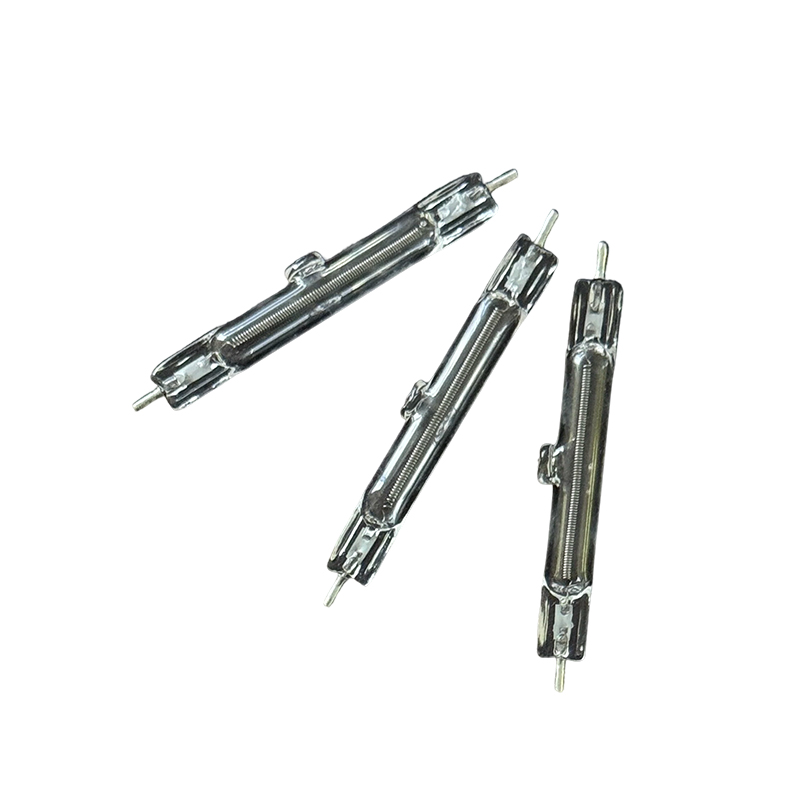
1. Principles of Thermodynamic Conduction: From Energy Conversion to Dermal Layer Activation
The core heating mechanism of beauty device light tubes is grounded in thermodynamic conduction principles, achieving precise skin tissue heating through the conversion of specific-wavelength light energy into thermal energy. Taking radiofrequency (RF) light tubes as an example, their operating principle closely resembles that of medical hyperthermia equipment: when high-frequency electromagnetic waves penetrate the epidermis, water molecules in the dermal layer absorb energy through resonance effects, generating a mild thermal field of 42–45°C. This temperature range, clinically validated, not only triggers immediate contraction of collagen fibers (enhancing skin tightness) but also activates fibroblasts to secrete FGF growth factors, promoting sustained regeneration of collagen and elastin.

The development case of Jmoon’s Transdermal Collagen Light technology further demonstrates the precision of thermodynamic conduction. This technology employs near-infrared light in the 760nm–1940nm wavelength band, with a customized light tube achieving energy focusing at 1400nm. Experimental data shows that this wavelength combination enables synchronous heating of the superficial, middle, and deep dermal layers, increasing collagen density by 15–30% after a single treatment. The energy distribution uniformity improves by 40% compared to traditional RF devices. The light tube’s internal filling of argon-krypton mixed gas and cobalt-rhenium-gallium alloy filaments not only enhances light-to-heat conversion efficiency but also filters out ineffective stray light through rare-earth elements, ensuring precise thermal energy delivery to target tissues while avoiding epidermal overheating and burn risks.
2. Dual Pathways of Anti-Aging Efficacy: Thermal Stimulation and Photobiomodulation
The anti-aging effects of beauty device light tubes are achieved through dual pathways: thermal stimulation and photobiomodulation. In thermal stimulation, sustained heat input triggers the dermal layer’s "wound healing response": when temperatures reach 45°C, the triple-helix structure of collagen fibers unravels, prompting the body to initiate repair mechanisms. Newly synthesized collagen fibers align more densely. Clinical studies reveal that after six RF light tube treatments, subjects exhibit an average 37% reduction in facial wrinkle depth and a 29% improvement in skin elasticity.
Photobiomodulation occurs through interactions between specific-wavelength photons and cellular mitochondria. For instance, 630nm red light activates cytochrome C oxidase, boosting ATP synthesis and accelerating fibroblast metabolism, while 850nm near-infrared light penetrates subcutaneous tissues to enhance microcirculation and nutrient delivery. Jmoon’s Transdermal Collagen Light technology integrates these wavelengths into a single tube, using pulsed energy output to create a synergistic effect between thermal stimulation and photobiomodulation. Experiments show this combined approach doubles skin barrier repair speed and reduces hyperpigmentation area by 41%.
3. Thermodynamic Control Technologies: Balancing Safety and Efficacy
Thermodynamic control technologies in beauty device light tubes directly determine their safety and effectiveness. Traditional LED light tubes often suffer from thermal degradation due to inadequate heat dissipation: when junction temperatures exceed 60°C, luminous efficacy declines by 0.5% per minute, while wavelength shifts can reach 20nm, preventing precise energy delivery to target tissues. To address this, modern premium light tubes employ aerospace-grade thermal materials. For example, Jmoon’s Transdermal Collagen Light tube uses graphene composite heat-conductive layers and liquid metal cooling systems to maintain junction temperatures below 50°C, ensuring less than 5% luminous decay over 100,000 hours of operation.
For temperature monitoring, dual-sensor arrays have become industry standard. A certain brand’s RF light tube, for instance, integrates NTC thermistors and infrared temperature probes to continuously track epidermal and dermal temperatures. When epidermal temperatures approach the 42°C threshold, the system automatically reduces energy output by 30% while activating a cooling fan module. This dynamic temperature control reduces burn risks from 2.3% in traditional devices to 0.07%, setting a new safety benchmark for home-use beauty devices.
4. Clinical Validation and Personalized Adaptation: From Laboratories to Real-World Scenarios
The anti-aging efficacy of beauty device light tubes has been validated through multiple clinical studies. In a double-blind trial involving women aged 35–55, 12 weeks of Transdermal Collagen Light tube treatment reduced periorbital wrinkle depth by 42% and improved skin radiance by 38%, with no hyperpigmentation side effects. Notably, skin types respond differently to thermodynamic stimulation: oily skin, with thicker stratum corneum, requires higher energy density (4.5J/cm²) to trigger collagen regeneration, while dry skin needs temperatures below 43°C to avoid barrier dysfunction.
Personalized adaptation technologies have thus become a research priority. A leading brand’s latest intelligent light tube system uses skin impedance detection and AI algorithms to generate customized treatment parameters within 0.3 seconds. For sensitive skin users, the system automatically adjusts red light wavelength to 620nm (10nm shorter than standard) and reduces RF energy density to 3.8J/cm², lowering discomfort scores from 4.2 to 1.8 (on a 10-point scale) while maintaining anti-aging efficacy. This precision adaptation expands the applicability of beauty device light tubes from professional medical settings to home use, truly achieving "technology democratization."